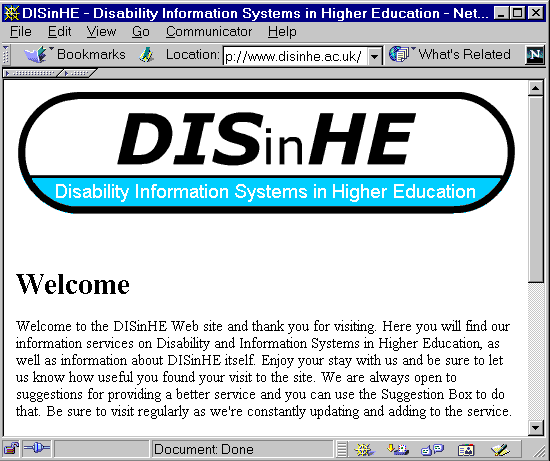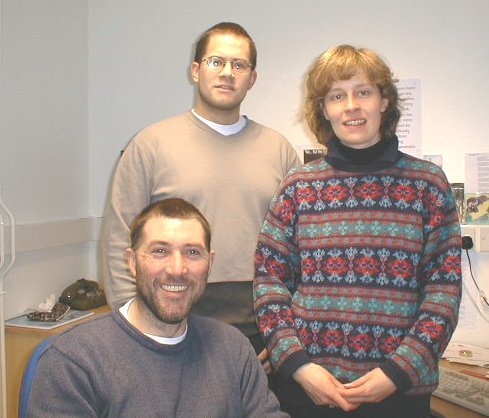The DISinHE Centre
There is a growing need for teaching and learning technology to be more accessible to students and staff with disabilities. The changes in the DSA (Disability Discrimination Act) which will come into force in October this year and the new European Human Rights Legislation which will be with us by the year 2000 all makes it imperative that designers of educational web sites, CD ROM software and all other technological developments take note of this new (at least to the UK) wave of legislation. Not forgetting that there is the possible removal of educational exclusion from the DDA in the year 2004. The current situation is that of rapidly changing technology. There is a great deal of significant development buts its of a variable quality and its not co-ordinated. There are few standards or guidelines and for many institutions it is seen as an add on extra or even worse as a charitable activity.
The purpose of the Disability Information System in Higher Education or DISinHE [1] is to facilitate the exploitation of computing and information technology for everyone in the higher education sector. We are not a research project but are a JISC (Joint Information Systems Committee) [2] funded project, which is hopefully due to become a JISC service in the year 2001.
Our philosophy is to see that accessibility is embedded in the sector. We are trying to ensure that we have collaboration across the higher education sector. We are sensitive to the challenges in higher education that produce university graduates and we are active in advocating positive change. We are also creating close links between teaching, research and the service provision. Awareness raising of the project within the Higher Education disability community, the commercial sector, and within the wider Higher Education community is an important part of the project. Members of the team have attended more than thirty conferences and formal meetings, at twenty of which either a full presentation of the DISinHE project has been given, or a description of the project has been given as part of a more general presentation. As illustrated in Figure 1, DISinHE also hosts a web site.

Figure 1: The DISinHE Home Page
Technology in fact is often one of the most disabling parts of the environment, it is important that we realise the diversity of the human population. It is no longer good enough to talk about our students and staff with disabilities as people, with the implication that this gives a sufficient description of their characteristics. Including people with obvious disabilities makes this point very forcefully, and should also lead to educationalists considering less diverse cases as different and worth giving attention to. The advances in current technology can either be used to support people with special needs or put them at an even greater disadvantage. Barriers created by inaccessible technology keep people with disabilities from their full potential as individuals. A widespread effort has been underway for years to break down these barriers but we must recognise that by looking at improved access for everyone we are ensuring better provision for people with disabilities and this leads to better provision for everyone. Higher quality learning materials come from ensuring that they are accessible to all. Providing an improved learning support environment will help the success rate of all students.

Figure 2: Members Of The DISinHE Team
References
- DISinHE, Project Home Page
<URL: http://www.disinhe.ac.uk/> - JISC, Home Page
<URL: http://www.jisc.ac.uk/>
Author Details
 Ian Webb, Development Officer
Ian Webb, Development Officer
DISinHE Centre
Department of Applied Computing
University of Dundee
Dundee, DD1 4HN
Email: ian@disinhe.ac.uk
Web site: http://www.disinhe.ac.uk/
